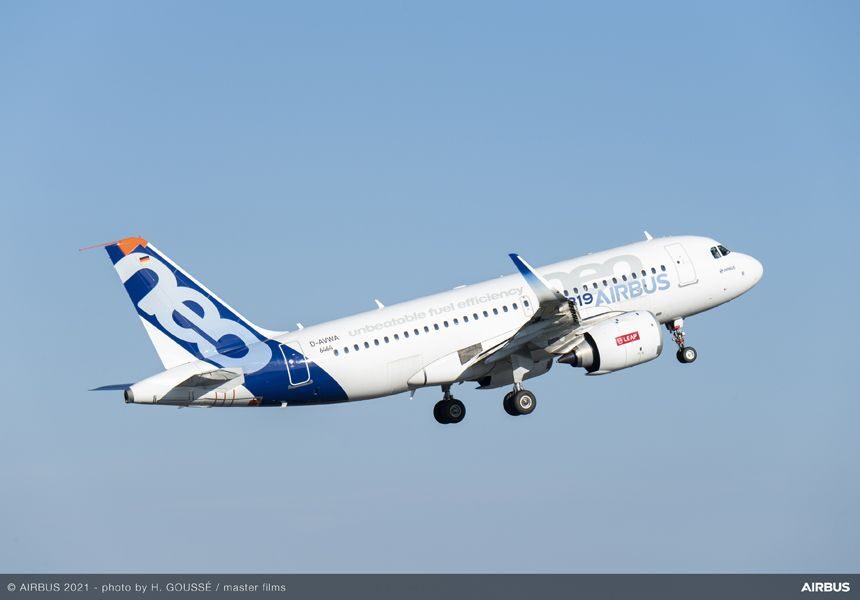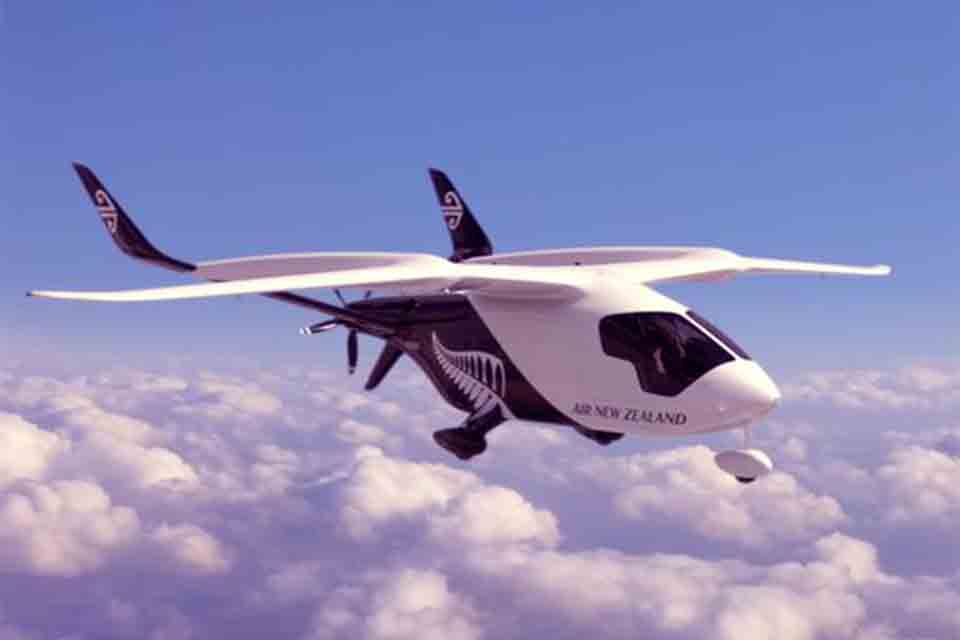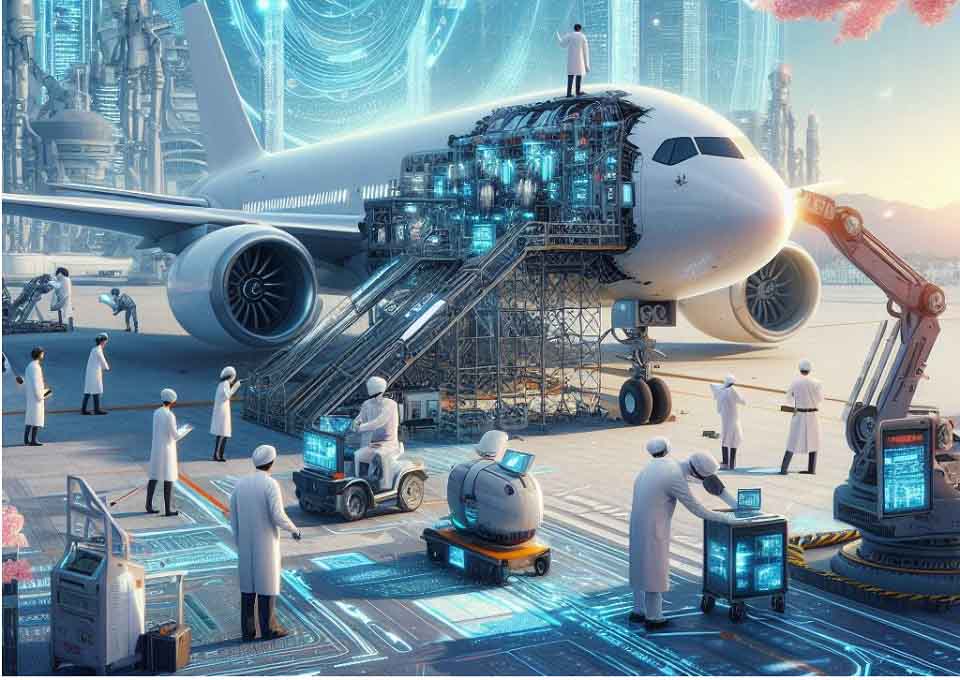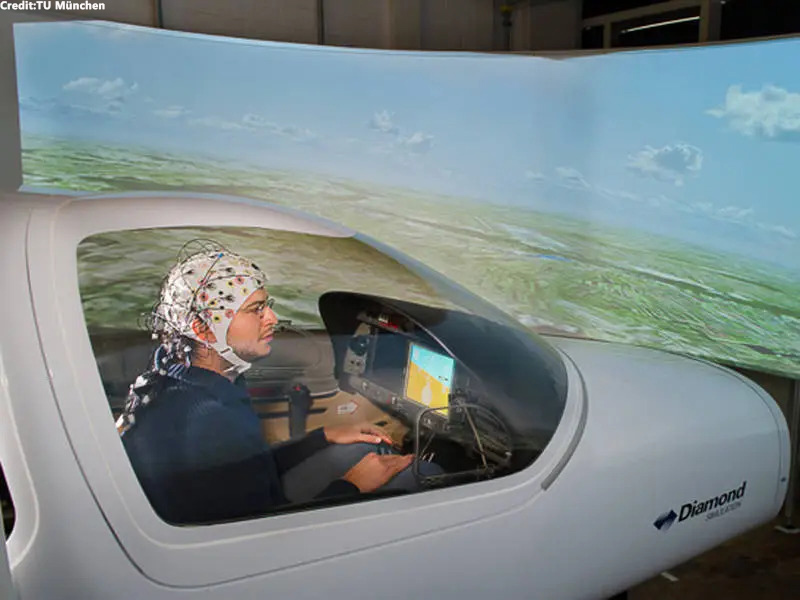Tech
First A319neo flight with 100% sustainable aviation fuel

Toulouse, 29 October 2021 – Airbus, Dassault Aviation, ONERA, the French Ministry of Transports and Safran have launched the first in-flight study of a single-aisle aircraft running on unblended sustainable aviation fuel (SAF).
During the flight test over the Toulouse region on 28 October, one CFM LEAP-1A engine of an Airbus A319neo test aircraft operated on 100% SAF. Initial results from the ground and flight tests are expected in 2022.
The unblended SAF is provided by Total Energies. It is made from Hydroprocessed Esters and Fatty Acids (HEFA), which primarily consists of used cooking oil, as well as other waste fats. HEFA is made of paraffinic hydrocarbons and is free of aromatics and sulfur. Approximately 57 tonnes of SAF will be used for the entire test campaign. It is produced in Normandy close to Le Havre, France. The 100% SAF will also be utilised for compatibility and engine operability studies on the Safran Helicopters Arrano engine used on the Airbus Helicopters H160, which are expected to start in 2022.
Airbus, in collaboration with DLR, is responsible for characterising and analysing the impact of 100% SAF on ground and in-flight emissions. Safran focuses on compatibility studies related to the fuel system and engine adaptation for commercial and helicopter aircraft and their optimisation for various types of 100% SAF fuels. Safran will perform LEAP engine ground tests with 100% SAF at its Villaroche facilities later this year to complete analysis. ONERA is supporting Airbus and Safran in analysing the compatibility of the fuel with aircraft systems and will be in charge of preparing, analysing and interpreting test results for the impact of 100% SAF on emissions and contrail formation. Dassault Aviation is contributing to the material and equipment compatibility studies and verifying 100% SAF biocontamination susceptibility.
ANA to start drone delivery service as Japan eases regulations
The study – known as VOLCAN (VOL avec Carburants Alternatifs Nouveaux) – contributes to global decarbonisation efforts currently underway across the entire aeronautical industry, and is benefiting from a financing of the France Relance recovery plan, the part thereof dedicated to the decarbonisation of aviation, which is implemented by DGAC under the supervision of Jean-Baptiste Djebbari, French Minister of Transports. The study’s ultimate goal is to promote the large-scale deployment and use of SAF, and certification of 100% SAF for use in single-aisle commercial aircraft and the new generation of business jets.
Rolls-Royce reaches new milestone building world’s largest aero-engine
@Airbus @Dassault_OnAir @onera_fr @SAFRAN

Tech
Air New Zealand to Introduce Battery-Powered Flights

In a groundbreaking move towards sustainable aviation, Air New Zealand has revealed its selection of Wellington and Marlborough Airports as the key ports for its inaugural all-electric aircraft operations.
The airline’s choice marks a significant step in its commitment to reducing carbon emissions in the aviation sector. The selected route for the debut flights with the Beta ALIA aircraft, named the ALIA CTOL, will encompass commercial demonstrator flights between Wellington and Marlborough. Initially, Air New Zealand will focus on cargo-only operations in collaboration with NZ Post, with flights expected to commence in 2026.
Wellington Airport has been designated as the primary hub for Air New Zealand’s pioneering venture into next-generation aircraft. Meanwhile, Marlborough Airport will also play a crucial role by establishing charging infrastructure to facilitate the aircraft’s operations, ensuring a seamless and sustainable journey.
Matt Clarke, CEO of Wellington Airport, expressed enthusiasm for the opportunity to host the commercial demonstrator flights, emphasizing the airport’s commitment to driving change in the aviation industry. He highlighted the significance of this partnership in advancing the decarbonization efforts within New Zealand and beyond.
“Partnering with Air New Zealand to host the commercial demonstrator is a giant leap for sustainable aviation, providing the basis for all airports to prepare for the next generation of aircraft technology.
Decarbonizing aviation is recognized as a critical global endeavor, and in New Zealand, maintaining regional connectivity throughout this transition is deemed of national importance. With the introduction of all-electric flights, Air New Zealand aims to lead by example, setting a precedent for eco-conscious aviation practices worldwide.
Aviation
Japan to Construct Second Passenger Jet Following First’s Setback

The Japanese government is set to collaborate with a private firm to construct a new passenger jet, a project expected to require approximately USD 33 billion. The anticipated outcome of this endeavor could materialize by 2035, aiming to significantly reduce carbon emissions and establish a new standard in eco-friendly aviation.
Japan is strategically focused on developing its passenger aircraft to compete globally, following a previous unsuccessful attempt with the Mitsubishi Regional Jet, which failed to gain approval from the FAA and other aviation authorities. After years of research, the decision was made to innovate by revamping the aircraft and introducing a unique hydrogen-powered engine concept.
While concrete plans are yet to be finalized, discussions revolve around various propulsion technologies, including hybrid electric systems and hydrogen combustion or fuel cell technologies. Notably, hydrogen emerges as a prominent contender, with the Japanese Ministry of Economy, Trade and Industry (METI) emphasizing the importance of leveraging Japan’s competitive advantage in technological innovation to drive the decarbonization of air transport.
Video: The First MRJ regional Plane from Japan is scrapped in the United States
Numerous aerospace companies are already pioneering hydrogen-powered electric aircraft as a promising solution to combat carbon emissions. Companies such as ZeroAvia and Universal Hydrogen are at the forefront, with projects ranging from small regional planes to larger passenger aircraft, reflecting a concerted effort towards sustainable aviation.
In parallel, collaborations between budget airlines like EasyJet, engine manufacturers like Rolls-Royce, and industry giants like Airbus underscore the collective commitment towards developing hydrogen-powered aircraft. Airbus, for instance, aims to introduce hydrogen-powered planes into commercial service by 2035.
Despite setbacks like the failed SpaceJet aircraft program, which incurred substantial costs without achieving liftoff, Japan remains undeterred. The country’s new aircraft venture indirectly challenges competitors like China’s COMAC C919, signaling Japan’s determination to carve out a significant presence in the aerospace industry.
Additionally, Japan’s collaboration with Britain and Italy in developing a sixth-generation fighter jet highlights its pursuit of cutting-edge aviation technology. This advanced fighter jet, featuring Rolls-Royce engines, laser targeting systems, and three-dimensional thrust vectoring engine nozzles, represents a leap forward in military aviation capabilities.
Under an MOU agreement, Japan retains the option to export these fighter jets to allied nations, potentially reshaping the global landscape of military aircraft manufacturing and distribution. With these ambitious projects, Japan aims to assert itself as a leader in both commercial and military aviation, pushing the boundaries of innovation and sustainability in the aerospace sector.
Watch Video : Japan to Construct Second Passenger Jet Following First’s Setback
Aviation
A New Era in Aviation: German Researchers Build a Plane, Controlled by the Brain

Unlocking the potential of the human mind, German researchers have achieved an astonishing feat: a plane controlled solely by the power of your thoughts. Imagine taking to the skies without ever touching a control stick, relying instead on the incredible capabilities of your brain. This groundbreaking technology heralds a new era where the boundaries of possibility are redefined, offering the exhilarating opportunity to navigate the skies
In a groundbreaking advancement, a team of researchers from Technische Universität München and TU Berlin in Germany has developed technology enabling planes to be flown using only the power of thoughts. Led by Professor Florian Holzapfel, the scientists have not only achieved this feat but have also demonstrated its remarkable precision.
Using a flight simulator, seven subjects, including one with no cockpit experience, successfully navigated virtual skies with enough accuracy to pass a flying license test. This achievement marks a significant milestone in aviation technology.
The key to this brain-to-plane communication lies in a cap outfitted with EEG electrodes, which capture signals from the subjects’ brains. These signals are then translated into commands through an algorithm developed by the TU Berlin scientists.
Tim Fricke, head of the EU-funded project Brainflight, emphasizes the long-term goal of making flying more accessible to a broader range of people. While the prospect of the Average Joe donning an EEG cap and flying a plane may still be distant, the technology holds promise for enhancing flight safety and efficiency.
During tests, pilots managed landing approaches under poor visibility conditions, demonstrating the system’s reliability. Moreover, the technology has the potential to ease the workload of pilots, allowing them more freedom to manage other tasks in the cockpit. Following successful tests, researchers are now exploring how to adapt control systems and flight dynamics to accommodate this innovative control method. With brain control, flying could become more intuitive and less physically demanding, ushering in a new era of aviation safety and accessibility.






















